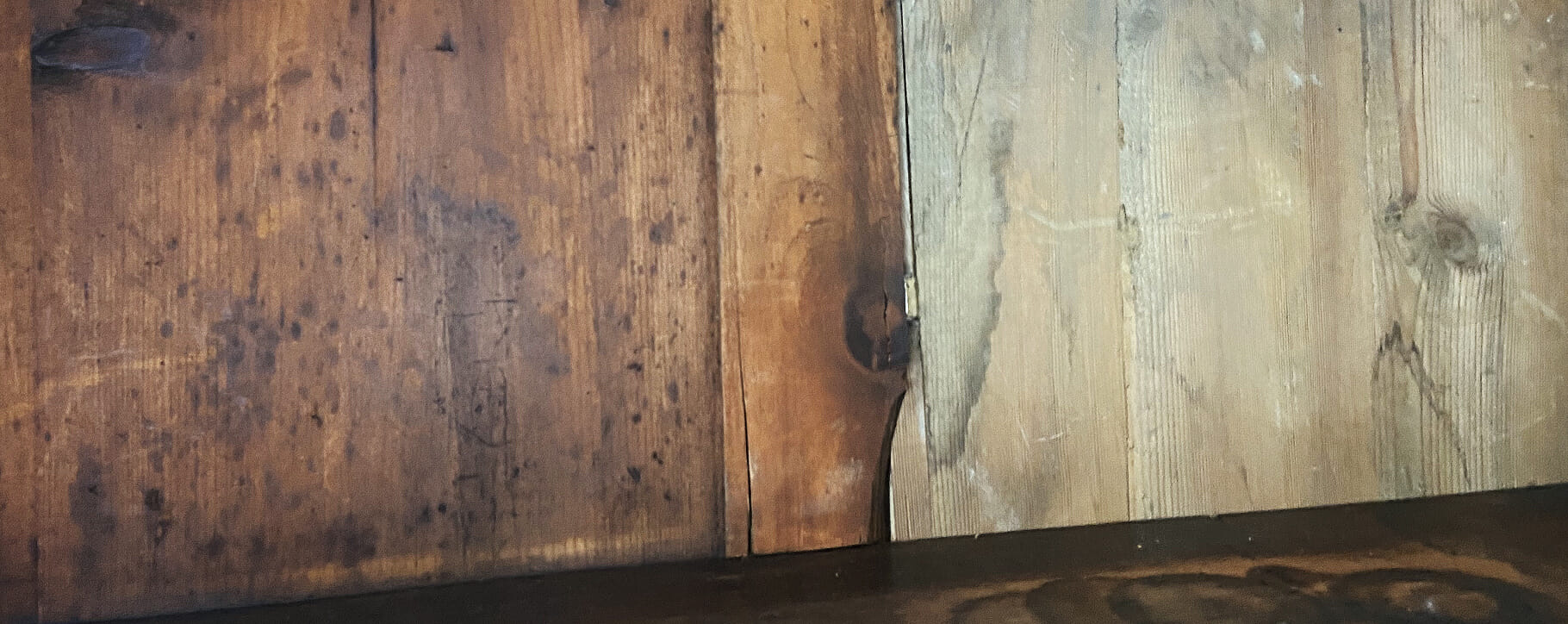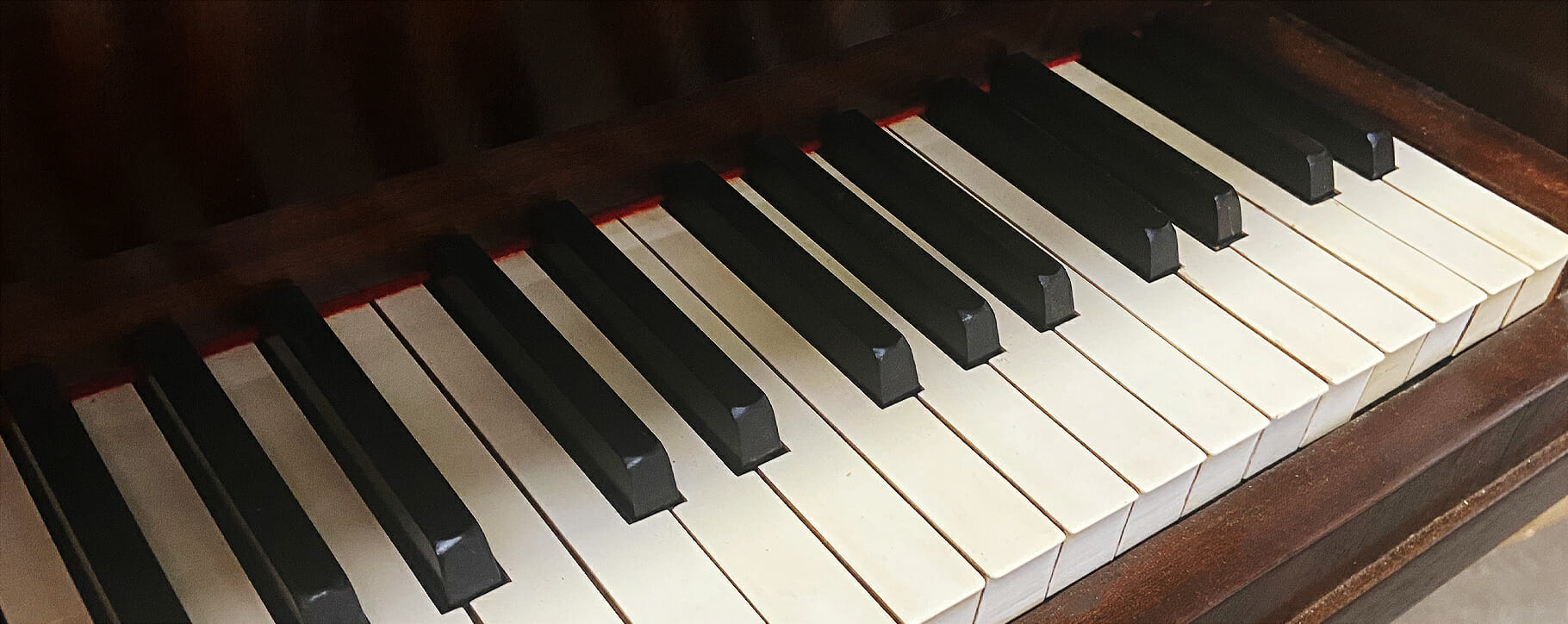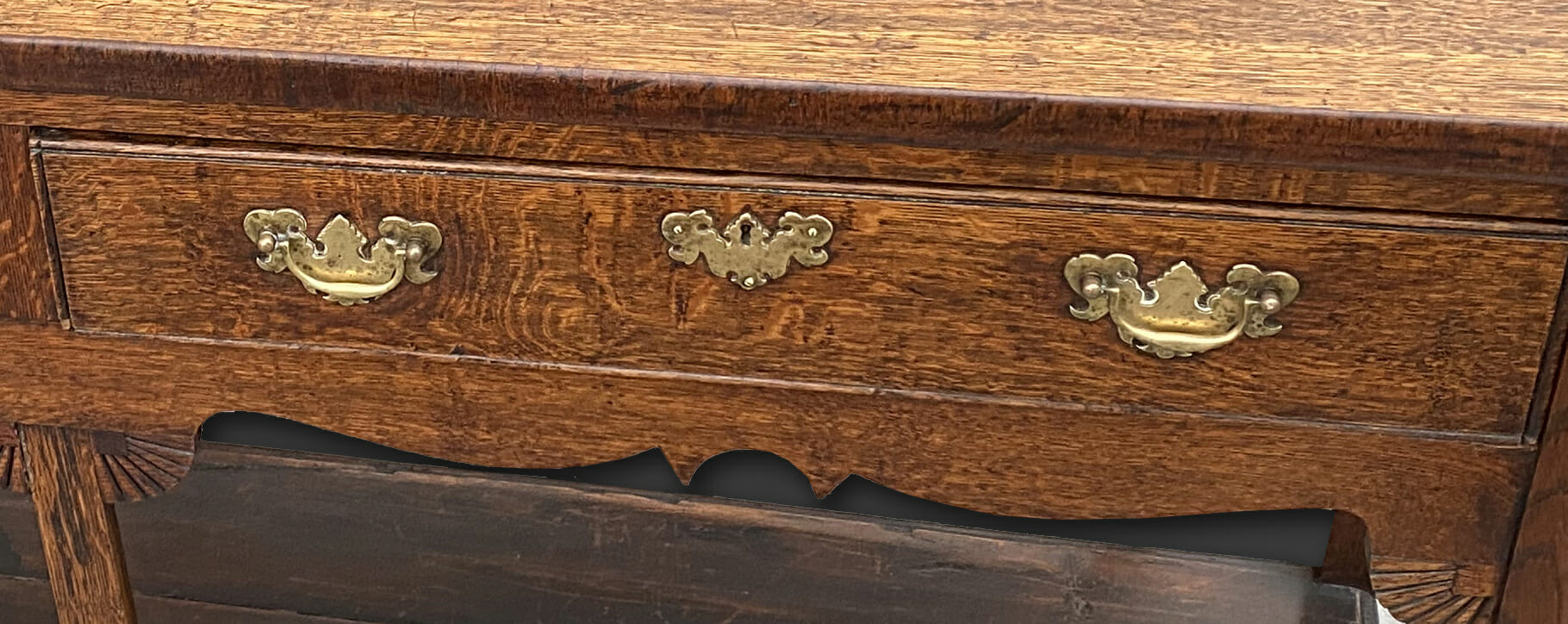Furniture tells a story of how we lived in the past, it displays the designs of influential periods and connects us to interiors throughout history. Therefore, sourcing the correct era and variety of wooden panels or details during furniture restoration is important. This serves a purpose for both preservation and historic integrity for the antique item.
 Above: an example of antique furniture which may be in need of traditional restoration, including a maple and birch rocking chair, a mahogany Pembroke table, a walnut and pine side table, a carved walnut cabinet, and a side chair known as a chaise gondole
Above: an example of antique furniture which may be in need of traditional restoration, including a maple and birch rocking chair, a mahogany Pembroke table, a walnut and pine side table, a carved walnut cabinet, and a side chair known as a chaise gondole
The craftsmanship of original designs may change over time, but it is with that understanding of history that our furniture experts approach a restoration project. The knowledge of different structures and features is key in achieving both a structurally secure and historically accurate furniture restoration of a chair, table, desk, cabinet, or more unusual item.
This article will outline some of the aspects of furniture which are considered for the ethically important practice of sourcing era appropriate materials. We will also cover what to look out for in your own furniture and how to spot whether it may have had past repairs which do not compliment the period or overall stability of the piece.
 Above: a selection of tools used in traditional furniture restoration, as well as a drawer front which could be used for sourcing accurate parts
Above: a selection of tools used in traditional furniture restoration, as well as a drawer front which could be used for sourcing accurate parts
Historically accurate wooden panels and finishes
It is important that any wooden features which have been added to replace severely damaged panels or surfaces match the variety of timber. In most cases, our furniture experts source the exact type of wood and match the correct stain, varnish, waxing or polish to give as much of a seamless finish as possible.
The same type of timber, or in rare cases wood of the same durability, is important for the preservation of furniture as it will ensure that all elements face the same levels of impact and aging in the future. Using a cheap piece of wood or board may add weakness to the furniture and add to it’s instability, hindering rather than helping the overall structure.
Some less traditional and modern repairs may use wood which is more vulnerable to attracting mould or moisture, and may age at a different rate to the rest of the wood – leading to a visually obvious repair in the future. Some modern wooden repairs may begin to warp, creating damage to the surrounding antique. Our conservators only use wood salvaged from furniture of the same era, or match appropriate timber with a historically accurate finish.
 Above: a selection of era-appropriate and new veneer details which our furniture expert has on hand to carefully match to any missing areas
Above: a selection of era-appropriate and new veneer details which our furniture expert has on hand to carefully match to any missing areas
When placing wooden repairs onto a piece of furniture, our team takes care in lining up the wood grain. Not only does this allow for a visually pleasing restoration, but ensures that it matches and adds to the strength of the original timber. This will then be stained and polished to the same levels to allow for a perfect finish.
Our team often recycle parts from furniture of the same era which may have previously been dismantled or in a state of only salvageable features. For example, a Victorian chest of drawers from the 1830s was in our studio and our expert carefully sourced a replacement backing panel from the very same decade to add both strength and historical accuracy. As well as panels, elements such as veneers, surfaces, shelves, drawers and doors can also be looked into as part of the traditional restoration process.
 Above: a back panel repair which uses a piece from a cabinet of the same era of the 19th century, this will be stained and finished to match the original
Above: a back panel repair which uses a piece from a cabinet of the same era of the 19th century, this will be stained and finished to match the original
Reinstating original brassware and design details
Where a handle has been lost or replaced, our team has a collection of antique brassware to recycle or they can handcraft a wooden handle to match the rest of the set. Brassware can often unscrew or become loose over time, leading to many of these aspects going missing. They may have also been replaced in the past to suit design aesthetics.
 Above: examples of a hole left by old handles, detailed brassware, an ivory inlay which can be salvaged and the holes left on a cabinet without original handles in place
Above: examples of a hole left by old handles, detailed brassware, an ivory inlay which can be salvaged and the holes left on a cabinet without original handles in place
Inlays and marquetry can also be sourced or recreated from appropriate materials. It is sometimes possible to find a close match to a missing antique mother of pearl, antique ivory or other unique inlay. During a recent restoration our team sourced and replaced an age-appropriate key for a damaged piano.
 Above: one of these piano keys was replaced with an era-appropriate key which was specially sourced as a repair by our furniture team
Above: one of these piano keys was replaced with an era-appropriate key which was specially sourced as a repair by our furniture team
Stringing – a thin wooden line which often runs around 19th to early 20th century furniture designs – can also be era-matched from other furniture or antique materials which are available to our furniture team. These can be carefully selected, cut, and colour-matched over a course of hours to create a perfect repair.
 Above: our furniture specialist restoring stringing to an antique nesting table
Above: our furniture specialist restoring stringing to an antique nesting table
Has my furniture been restored or modified in the past?
Throughout history, a piece of furniture may have been damaged or modified to suit the needs of their current owners. We often find that shelves may have been added or removed, handles have been changed, whilst some areas may have been stained with a different shade or overpainted.
You can see a historic repair quite easily, especially if this has been put in place incorrectly, due to a colour change between panels of sections of wood. Some panels may have been replaced with a different variety of timber, the grain may be facing in the wrong direction, or it may have been incorrectly colour-matched in the stain or finish. In the worst case, failing repairs may be loose in some areas or be ageing and deteriorating unlike the rest of the design. These areas can be replaced with the traditional techniques practiced by our furniture experts.
 Above: a desk in our studio with detailed brassware handles original to the era of the furniture
Above: a desk in our studio with detailed brassware handles original to the era of the furniture
Brass handles are a common feature to have been replaced, as these may have been lost or not have matched the interior design of subsequent decades. A clear indication of this will be in old holes in a drawer or door which can be seen from the outline or inside of the furniture. Our team can either fill these holes or replace the ‘new’ handles with appropriate brassware which matches the original era – correcting the changes made to bring the furniture back to its original and intended appearance.
Popular eras of furniture
You may come across these popular design periods in antique or valuable furniture:
- Elizabethan 1520 – 1620
- Jacobean 1600 – 1690
- William & Mary 1690 – 1735
- Queen Anne 1700 – 1755
- Louis XVI or Baroque 1760 – 1789
- Chippendale 1750 – 1790
- Gothic Revival 1740 -1900
- Neoclassical 1750 – 1830
- Arts & Crafts or Art Nouveau 1880 – 1910
- Art Deco 1920 – 1940
- Scandinavian Contemporary 1930 – 1950
- Mid-century Modern 1945 – 1969
How can we help?
If you have furniture which may require historically accurate furniture restoration, please get in touch with our helpful team to arrange an assessment and treatment proposal.
To make contact please email us via [email protected] or call 0207 112 7576

 Above: an example of antique furniture which may be in need of traditional restoration, including a maple and birch rocking chair, a m
Above: an example of antique furniture which may be in need of traditional restoration, including a maple and birch rocking chair, a m Above: a selection of tools used in traditional furniture restoration, as well as a drawer front which could be used for sourcing accurate parts
Above: a selection of tools used in traditional furniture restoration, as well as a drawer front which could be used for sourcing accurate parts Above: a selection of era-appropriate and new veneer details which our furniture expert has on hand to carefully match to any missing areas
Above: a selection of era-appropriate and new veneer details which our furniture expert has on hand to carefully match to any missing areas Above: a back panel repair which uses a piece from a cabinet of the same era of the 19th century, this will be stained and finished to match the original
Above: a back panel repair which uses a piece from a cabinet of the same era of the 19th century, this will be stained and finished to match the original Above: examples of a hole left by old handles, detailed brassware, an ivory inlay which can be salvaged and the holes left on a cabinet without original handles in place
Above: examples of a hole left by old handles, detailed brassware, an ivory inlay which can be salvaged and the holes left on a cabinet without original handles in place Above: one of these piano keys was replaced with an era-appropriate key which was specially sourced as a repair by our furniture team
Above: one of these piano keys was replaced with an era-appropriate key which was specially sourced as a repair by our furniture team Above: our furniture specialist restoring stringing to an antique nesting table
Above: our furniture specialist restoring stringing to an antique nesting table Above: a desk in our studio with detailed brassware handles original to the era of the furniture
Above: a desk in our studio with detailed brassware handles original to the era of the furniture 




